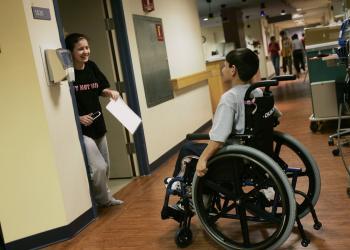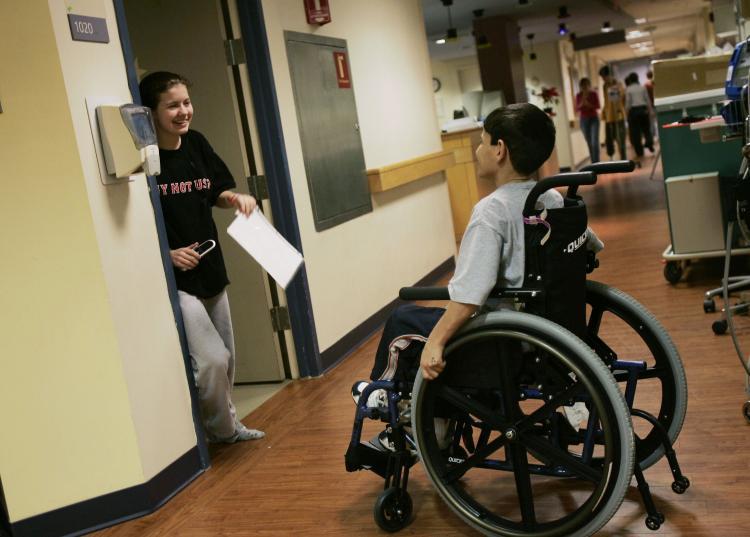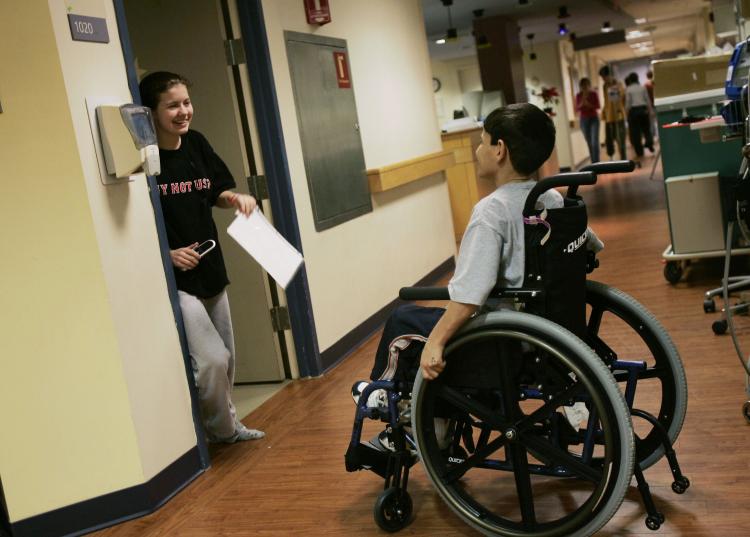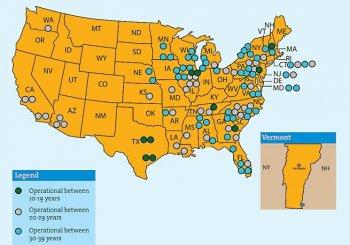BOSTON—Spaulding Rehabilitation Hospital in Boston is adding a new facility in Charlestown, in a $220 million project, which city officials expect will create 300 new construction jobs in the city.
Spaulding, a teaching hospital for Harvard Medical School, is one of the nation’s top hospitals, with U.S. News and World Report ranking it as the fourth best hospital in the nation.
“Our major strength is our unique blend of care, research and education as a teaching hospital of Harvard Medical School. There are over 100 active research studies in areas such as brain injury, stroke, and cerebral palsy, and we are able to bring many cutting edge therapies into our care as a research leader,” said Timothy Sullivan, director of Communications at Partners Continuing Care and The Spaulding Rehabilitation Network in an e-mail.
The new eight story facility, in Charlestown Navy Yard, will replace the Boston campus as the main hospital in the Spaulding network.
“Spaulding’s new facility is good news because it will improve people’s physical health with a new state-of-the-art facility and strengthen the city’s economic health with the creation of much needed construction jobs,” Mayor Thomas M. Menino said.
A major focus for the building is energy efficiency and environmentally sound architectural and interior design. In addition to the new facility’s LEED silver certification and its compliance with “Green Design” specification, the hospital also chose a former brownfield for the site.
The cleaning up of brownfields, sites with hazardous materials that make them unsuitable for use, has been part of a statewide effort to boost the economy by putting these dormant locations to use.
“Spaulding’s commitment to our environment by investing in the cleanup of this site and the project’s LEED silver certification speak to their mission to not only rehabilitate their patients, but the community they will call home,” said Gov. Deval Patrick.
In addition to expected positive benefits to the community, the replacement will allow needed improvements to the medical care provided at the Boston branch.
“Essentially the current facility, while it has served us well, has reached the end of its life cycle. It was not originally designed as a rehab hospital, and while we have made many modifications it simply doesn’t provide the long-term flexibility to deliver 21st century rehab care. This new facility will provide increased flexibility, research and treatment as well as exceed ADA standards,” said Sullivan.
The new hospital addition will also have a rooftop garden and an aquatic center, which will increase the hospital’s energy efficiency while providing therapeutic uses for patients.
The programs made available by the new facility include Dr. Charles Weingarten Adaptive Sports and Recreation Program, which aims to rehabilitate patients’ physical and mental wellbeing through sports such as fencing, kayaking, and tennis. The program will not only be available to current Spaulding patients, but also former patients, and disabled members of the community.
The project has been planned since 2005. Since then, the Charlestown Neighborhood Council, the Boston Redevelopment Authority, and the Massachusetts Department of Public Health’s Public Health Council have had to state their approval in order to realize the project. The process is in the final approval process for Chapter 91 licensing by the Environmental Protection Agency.
Spaulding, a teaching hospital for Harvard Medical School, is one of the nation’s top hospitals, with U.S. News and World Report ranking it as the fourth best hospital in the nation.
“Our major strength is our unique blend of care, research and education as a teaching hospital of Harvard Medical School. There are over 100 active research studies in areas such as brain injury, stroke, and cerebral palsy, and we are able to bring many cutting edge therapies into our care as a research leader,” said Timothy Sullivan, director of Communications at Partners Continuing Care and The Spaulding Rehabilitation Network in an e-mail.
The new eight story facility, in Charlestown Navy Yard, will replace the Boston campus as the main hospital in the Spaulding network.
“Spaulding’s new facility is good news because it will improve people’s physical health with a new state-of-the-art facility and strengthen the city’s economic health with the creation of much needed construction jobs,” Mayor Thomas M. Menino said.
A major focus for the building is energy efficiency and environmentally sound architectural and interior design. In addition to the new facility’s LEED silver certification and its compliance with “Green Design” specification, the hospital also chose a former brownfield for the site.
The cleaning up of brownfields, sites with hazardous materials that make them unsuitable for use, has been part of a statewide effort to boost the economy by putting these dormant locations to use.
“Spaulding’s commitment to our environment by investing in the cleanup of this site and the project’s LEED silver certification speak to their mission to not only rehabilitate their patients, but the community they will call home,” said Gov. Deval Patrick.
In addition to expected positive benefits to the community, the replacement will allow needed improvements to the medical care provided at the Boston branch.
“Essentially the current facility, while it has served us well, has reached the end of its life cycle. It was not originally designed as a rehab hospital, and while we have made many modifications it simply doesn’t provide the long-term flexibility to deliver 21st century rehab care. This new facility will provide increased flexibility, research and treatment as well as exceed ADA standards,” said Sullivan.
The new hospital addition will also have a rooftop garden and an aquatic center, which will increase the hospital’s energy efficiency while providing therapeutic uses for patients.
The programs made available by the new facility include Dr. Charles Weingarten Adaptive Sports and Recreation Program, which aims to rehabilitate patients’ physical and mental wellbeing through sports such as fencing, kayaking, and tennis. The program will not only be available to current Spaulding patients, but also former patients, and disabled members of the community.
The project has been planned since 2005. Since then, the Charlestown Neighborhood Council, the Boston Redevelopment Authority, and the Massachusetts Department of Public Health’s Public Health Council have had to state their approval in order to realize the project. The process is in the final approval process for Chapter 91 licensing by the Environmental Protection Agency.





Friends Read Free